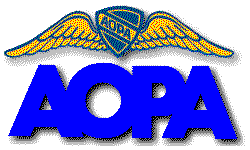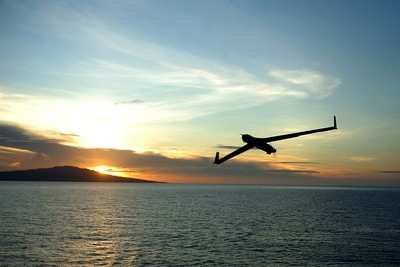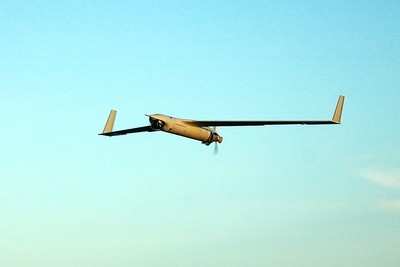Other Unauthorized Flights Reported Following Houston
Incident
by ANN Associate Editor Rob Stapleton
 The recent test flight
of an unmanned aerial vehicle near Houston, TX for the Houston
Police Department raises questions about the use of unmanned
aerial system aircraft by law enforcement agencies in the US.
The recent test flight
of an unmanned aerial vehicle near Houston, TX for the Houston
Police Department raises questions about the use of unmanned
aerial system aircraft by law enforcement agencies in the US.
"We are aware that other police departments around the nation
are looking into the use of UAVs for various reasons," said Heidi
Williams, Director of Air Traffic Services for the Aircraft Owners
and Pilots Association. "We are monitoring this very closely."
The test flight of the UAV was conducted in secret on November
16, in Waller County, TX by Insitu, Inc. for the Houston Police
Department, and the Department of Homeland Security. The flight --
conducted without issuance of a Notice To Airmen -- was
caught on camera by a KPRC-2 helicopter crew, as reported by ANN.
According to Washington-based Insitu, they were authorized by
the Federal Aviation Administration to make the demonstration
flight -- and the FAA backs them up. "A COA (certificate of
authorization) was issued prior to the test," said Roland Herwig,
spokesperson for the Southwest Region of the FAA.
Of concern to the FAA, and AOPA, is how the Houston Police
Department handled the media during the exhibition flight. The
department apparently misled KPRC-2, by saying a NOTAM had been
issued by the Federal Aviation Administration. The department then
advised the news crew to leave the test area.
"The issue with this test flight was that a Houston Police
Department helicopter told the Channel 2 helicopter pilot that a
NOTAM had been issued and that their helicopter had to leave the
area," said Williams. "It’s our understanding that an
advisory was issued, but that the police ordered them to
leave."
 An FAA official,
however, confirmed a NOTAM was not issued... adding the agency is
investigating why HPD blocked the access by KPRC reporters during
the test. "The COA was issued by the ATO, but no NOTAM or TFR was
needed. The test was done in Class G airspace," said Herwig.
An FAA official,
however, confirmed a NOTAM was not issued... adding the agency is
investigating why HPD blocked the access by KPRC reporters during
the test. "The COA was issued by the ATO, but no NOTAM or TFR was
needed. The test was done in Class G airspace," said Herwig.
According to the FAA, the authorization was issued for one day
only for a single flight below 1,200 feet AGL and limited to a
two-nautical mile radius. KPRC reported the UAV was circling at
1,500 feet AGL as they followed it in their helicopter for
filming.
A statement by Insitu says the flight was limited to a two-mile
radius at an altitude up to 1,000 feet for the flight. AOPA's
Williams concurred -- "They had the COA for one flight that morning
up to 1, 000 feet," she told ANN.
Insitu reports the flight was made in accordance with its
authorization, and that an onboard Mode C transponder was
functioning -- allowing the tracking of the flight by Houston
TRACON while the UAV was in flight.
This isn’t the first, or the last, UAV test in general-use
airspace, according to AOPA. Other demonstrations of UAVs are
expected, with at least four other public service departments in
the coming months.

"We are aware the Miami-Dade Police Department is planning a
flight in the future," said Williams. Miami Dade Police are working
with the FAA and the media in Florida to unveil the use of the
Honeywell Micro Air Vehicle in February or March of 2008, according
to a police press release.
Insitu also says that it is quite possible they will be making
other flights for the Houston Police Department in the future.
"We will be working with the HPD and the FAA in the future to
gather operational data and experience as rules and safety
procedures for integrating UAV’s into the airspace are
developed," according to the company.
 Of additional concern is
the possibility of blanket authorizations to fly the UAVs on
demand, and potentially close airspace to all aircraft traffic. "We
would not support this type of arrangement and would hope that law
enforcement will work closely with the FAA if and when UAVs are
used now and in the future," added Williams.
Of additional concern is
the possibility of blanket authorizations to fly the UAVs on
demand, and potentially close airspace to all aircraft traffic. "We
would not support this type of arrangement and would hope that law
enforcement will work closely with the FAA if and when UAVs are
used now and in the future," added Williams.
Both the FAA and AOPA said the use of UAVs is still in the
development stage, and there is no mechanism yet available for
continued "authorizations" for flights on demand.
According to the FAA, the authorizations (COA) are part of a
pilot program to help identify the hazards and associated risks of
operating unmanned aircraft by law enforcement agencies and to
determine if appropriate mitigations can be developed.
"Right now there is no real good way to track how many of these
demonstration flights have actually occurred," said Williams.
"According to the FAA there have been about 100 COAs issued, but we
are aware that other un-authorized flights have also been
made."
Concerns over further Temporary Flight Restrictions by pilots
may be premature, according to the FAA.
"Only operations that can safely be conducted will be approved,"
said FAA’s Herwig. "Such operations must provide for the
continued safety of the National Airspace System as well as persons
and property on the ground."
Initially, HPD executive assistant police chief Martha Montalvo
said the department was looking into using the UAVs as early as
June 2008. After the furor surrounding the November 16 test,
however, the department may have softened its original stance.
HPD now says it is "exploring all new technologies and it is too
premature to comment on when, or if the UAVs will be used," HPD
Officer Joanne Abad told ANN.

AOPA is working with the ATO sector of the FAA to address
additional concerns over the use of UAVs and is part of a working
group, but that they will likely have no jurisdiction over
Department of Defense use of the unmanned aircraft.
According to AOPA officials, this UAV event has prompted KPRC-2
to do an investigation piece on airspace use and will be aired in
the coming weeks... insuring the issue of UAVs in the nation's
skies remains on the radar scope for at least a bit longer.
 ANN's Daily Aero-Linx (05.06.25)
ANN's Daily Aero-Linx (05.06.25) ANN's Daily Aero-Term (05.06.25): Ultrahigh Frequency (UHF)
ANN's Daily Aero-Term (05.06.25): Ultrahigh Frequency (UHF) ANN FAQ: Q&A 101
ANN FAQ: Q&A 101 Classic Aero-TV: Virtual Reality Painting--PPG Leverages Technology for Training
Classic Aero-TV: Virtual Reality Painting--PPG Leverages Technology for Training Airborne 05.02.25: Joby Crewed Milestone, Diamond Club, Canadian Pilot Insurance
Airborne 05.02.25: Joby Crewed Milestone, Diamond Club, Canadian Pilot Insurance







